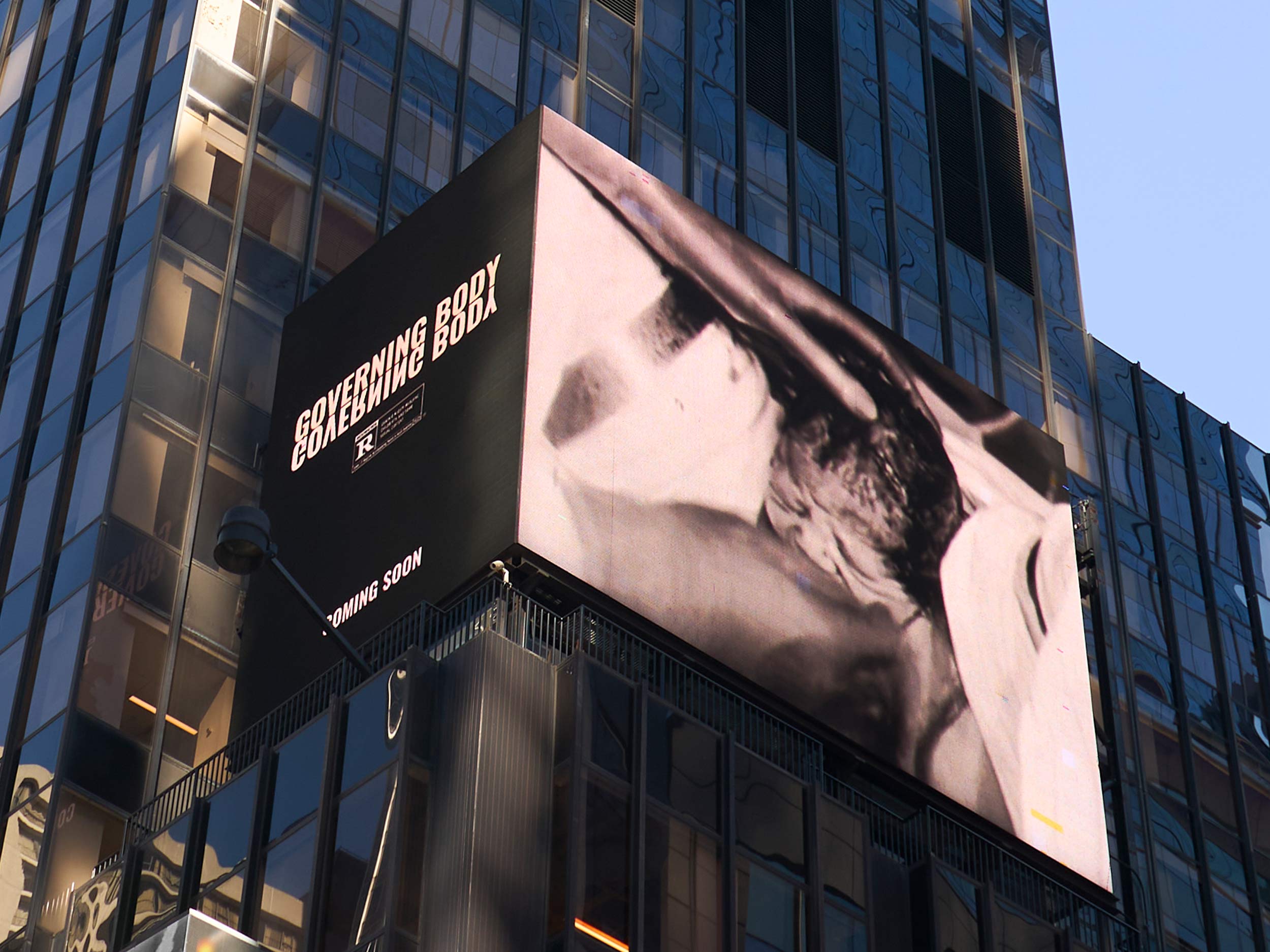The film rating system has a history of stigmatizing the female body. Is that their fault, or ours?
Last week, on the corner of 43rd and Broadway, a Times Square billboard began its run. Cast amid flashing signs for Starbucks and Gap, LED screens touting grocery delivery, luxury watches, and Netflix originals, is the black-and-white image of a newborn baby—mid-delivery—seemingly taking a first breath in the hands of a doctor. The advertisement promotes a short film by the artist Julia Weist, titled Governing Body. According to the Motion Picture Association, it is unsuitable for public viewing.
Governing Body—created in collaboration with Archive Films—is composed of previously-censored scenes, cut by New York’s Motion Picture Division, which operated between 1921 and 1965. Over that timespan, the organization reviewed every work to be publicly screened in the state’s cinemas, eliminating any content deemed “indecent, immoral, inhumane, sacrilegious, or likely to incite a crime.” Per Weist, who reviewed thousands of archival documents from the organization’s tenure, “Censorship skewed heavily toward curtailing the representation of women and non-binary characters’ bodies and freedoms.” Her film, in effect, located those scenes featuring lesbian relationships, trans women, references to abortion, as well as female characters pictured drinking, dancing, taking drugs, getting dressed, breastfeeding, and ultimately, giving birth. It’s a compilation of feminine taboo that—for nearly half a century—New York’s audience was not allowed to see.
Of course, that was then, and this is now. You would think that these relatively harmless scenes—produced in an America quite different from the one we live in today—wouldn’t keep on scandalizing. After all, in the realm of PG-13, there’s plenty of suicide (Perks of Being a Wallflower), gun violence (Skyfall), sexual assault (The Lovely Bones), and nudity (Titanic). Yet Governing Body received a Restricted rating from the MPA, for “graphic nudity involving childbirth, and some sexual content”—and the 1948 still that would ultimately make its way to Times Square was dissproved, for “heavily implied genital nudity and a realistic depiction” of the delivery process. Weist and Archive Films disregarded the MPA’s instructions to “revise and resubmit” their advertisement, therefore anticipating sanctions: potentially, revoked ratings, or the distributor’s removal from the rating process entirely, for current and future projects up to 90 days. Submitting a film for ratings is an entirely voluntary process—but it does have a serious impact on whether a film can be screened commercially, or in schools, thus influencing the size and scope of its audience.
“Turning a frightening event into comedy helps to subdue its power, while horror films deliver a sort of cathartic ordeal into which we strap ourselves willingly, and from which we emerge as survivors, having got through the whole thing.”
Back in 2014, for instance, controversy erupted over the MPA’s R rating of Love is Strange, a feature centering the lives of an older gay couple, who are forced to move out of their shared New York apartment when word of their marriage reaches the Catholic school where one of the men is employed, and subsequently fired from. Despite the fact that the film has no nudity, no sex, and no violence, its MPA categorization meant that no one under the age of 17 could watch without a parent or guardian present. Across the board, critics figured that homophobia was the reason for such a decision, as comparable films featuring heterosexual couples were judged to be more appropriate for younger audiences. “This is a gentle, if often heartbreaking story about two loving men in a long-time committed relationship,” wrote film critic Stephen Whitty. “What are they assuming we want to protect our children from?”
Governing Body comes at a particularly tense moment in the sphere of American politics—namely, in the wake of the overturning of Roe v. Wade. The original reason for this targeted restriction, established in the mid-20th century, was that “realistic portrayals of pregnancy and childbirth would scare young women away from pursuing motherhood,” according to a Cambridge study. These days, writes journalist Muriel Zagha, we mostly see childbirth in rom-coms (What to Expect When You’re Expecting, Knocked Up) and horror flicks (Rosemary’s Baby, Alien)—in both cases, ensuring that an anxiety-provoking “mystery” of the human condition remain shrouded in ridiculousness, or ridiculous terror: “Turning a frightening event into comedy helps to subdue its power, while horror films deliver a sort of cathartic ordeal into which we strap ourselves willingly, and from which we emerge as survivors, having got through the whole thing.”
Weist’s film, then, can be considered an act of protest—not against the MPA per se, but rather against the cultural norms that position childbirth (or any of the other tropes portrayed in Governing Body) as something indecent, or out-of-bounds in the marketplace of ideas. The MPA turned down an on-the-record request for comment, but generally maintains that its mission in the film industry is strictly informational—not to censor, but to guide parents and educators and the like toward what’s appropriate for children to consume. They say that these standards are set by the general public—that they’re simply the interpreters and the messengers.
In any case, it’s certainly ironic that a film about censorship was barred, in some right, from institutional domain. Luckily, Weist can still show her film, and she can still post that baby in the middle of Times Square. The MPA is certainly complicit—in the artist’s words—in “perpetuating a legacy of suppression and control that stigmatizes bodily autonomy.” But that’s unlikely to change, and they technically have no obligation to—at least until the American voice makes up its mind on what to do with the non-male body: whether it has a right to exist, to make choices, to be represented, and to be seen, by children or anyone else.







